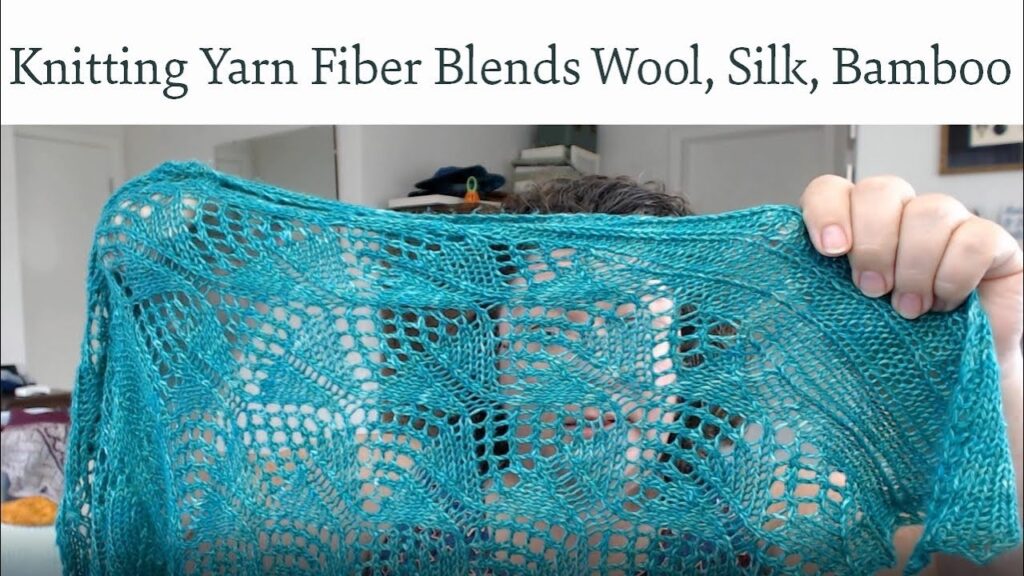Cotton, Linen, Hemp, Soy, Bamboo, Corn, and Silk
Many yarns are made from plant fiber, particularly cotton and linen. Silk is a unique type of fiber. Understanding yarn fiber helps when choosing yarn for a project.
Plant fibers are becoming popular among knitters who want a more organic, environmentally-friendly yarn. Unlike animal fibers, plant fibers tend to release heat so they keep the wearer cool. They will stretch but gradually lose the ability to regain their shape.
Cotton Fiber
Cotton is the most popular fiber-producing plant. As the cottonseed, or boll, matures, it cracks open, releasing the fluffy cotton fibers. Different types of cotton have been grown and developed in different parts of the world, and they vary in fiber length and softness. Cotton fibers have a natural twist and are stronger than wool. They become even stronger when wet, absorbing up to 20% of their weight in water which then evaporates quickly, keeping the fiber dry and cool. Cotton is usually combed before it is spun, which makes for a smoother, stronger surface in the yarn. This fiber has no memory or elasticity, so when it stretches it will regain its shape only after being washed, but loses this ability over time. Some yarns blend cotton with synthetic or wool fibers to help with elasticity.
Cotton naturally comes in a wide variety of colors, from white to yellow to slightly pink to brown. Until recently, however, it was very difficult to find cotton yarn in anything other than white or dyed colors. But now some yarn producers, such as Knit Picks, are selling cotton yarn in a variety of natural colors.
Flax Produces Linen Fiber
Linen is made from the processed stem of the flax plant. This fiber is initially stiff and rough, but it becomes softer and more lustrous the more it’s worked with. It’s stronger than cotton and also absorbs water and cools the wearer. It has no elasticity, but has a good drape and is very durable. It also absorbs and reflects dye very well.
The hemp stem also produces a strong, durable fiber that behaves like linen and is often blended with wool in yarn.
Silk Fiber
Silk is in a category of its own, as it is actually planted fiber that is processed through an animal. Silkworms feed on leaves and then secrete a thin thread that they spin to make their cocoon. Bombyx silk comes from silkworms that feed on mulberry leaves and produce white silk, while Tussah silk comes from wild silkworms that produce ivory or light brown silk.
Silk manufacturers must first degum the silk, which cleans and separates the silk fibers. Reeled silk is made from one continuous silk thread, while spun silk is made from shorter threads of silk that are spun together. Silk is warm and absorbent like wool, incredibly strong, has excellent drape, and has some elasticity but is slow to return to shape. It also has a smooth, reflective surface that gives it a lustrous quality.
Plant Fibers That Are Processed Like Silk
Yarn manufacturers can now process many plant fibers like silkworms produce silk, rendering the fiber into a liquid and then artificially spinning it into a thread. Soy yarn is made from soy pulp being made into a liquid and then spun. It is lustrous like silk, soft, warm, and absorbs water. Bamboo yarn is made from the cellulose in bamboo stalks. The small holes in the fiber make it water-absorbent, and it is very soft and antibacterial.
Manufacturers can also break down corn starches into a paste which is then spun into yarn. Corn yarn is very soft and absorbent. Rayon yarn is made from wood pulp, and yarn manufacturers have also experimented with seaweed and sugarcane yarn.
Source
Parkes, Clara. The Knitter’s Book of Yarn: The Ultimate Guide to Choosing, Using, and Enjoying Yarn. New York: Potter Craft, 2007.

